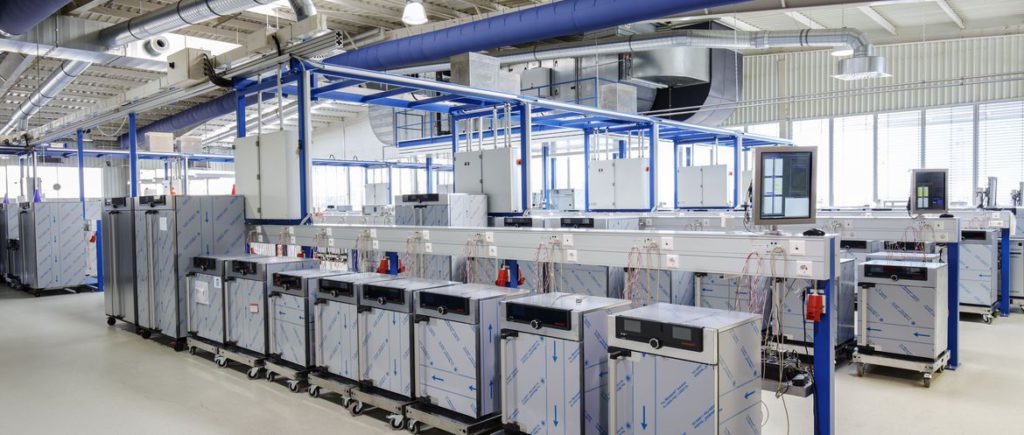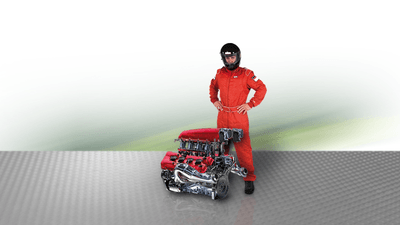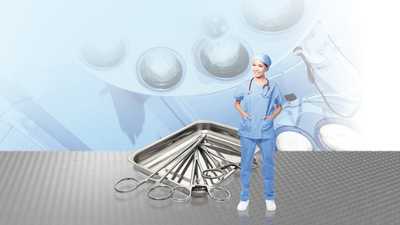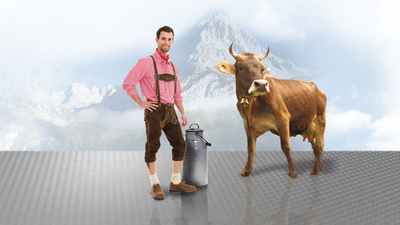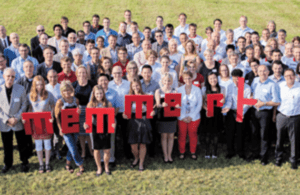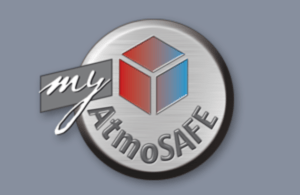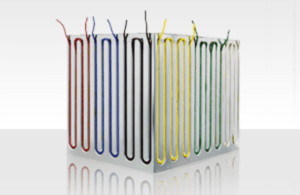Calibration and quality testing in the test bay
Do all appliances, without exception, keep our promise of an absolutely precise controlled atmosphere? Each of our laboratory appliances is subject to our exceedingly high quality standards prior to leaving the factory. How quickly does an appliance heat up, how quickly does it cool down? Are all parameters within the maximum permissible tolerance?
The Memmert test bay has a capacity of 540 places, in which every heating oven and every heating bath runs through a fixed routine for calibration and quality testing prior to final delivery.
Connected to an interface, the central test system automatically detects each appliance and starts the intended test routine. A calibrated reference measuring system, traceable according to the German Calibration Service DKD, ensures high-precision temperature measurements, and therefore the exact calibration of the appliances. CO2 incubator, humidity chamber, constant climate chamber and climatic test chamber are supplied with all necessary media, such as CO2 gas and pure water, at special test stations.
To keep test processes comparable for all relevant parameters such as temperature, CO2, humidity or pressure, a defined constant climate permanently prevails in the entire test room, which has a volume of 6,500 m3. Depending on air temperature and quality, an intelligent calibration system control circulates up to 39,000 m3 of air per hour. The warm air extracted is then fed into a waste heat recovery system.
In addition, an energy-efficient high-performance air conditioning with 245 kW nominal cooling power and a regulated supply of fresh air ensure optimal conditions for employees in the test bay.
